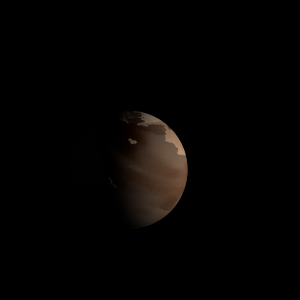|
|
Space Astro
|
Info for exoplanet "Puck"
| Scientific (actual) data |
|---|
| Planet | Kepler-1350 c |
| Planet status | Confirmed |
| Radius | 0.154 |
| Orbital period | 1.76679 |
| Discovered | 2016 |
| Updated | 2021-02-05 |
| Tconj | 2454970 |
| Publication | Announced on a website |
| Detection type | Primary Transit |
| Alternate names | 2MASS J19130013+4640465 c, K02793.02, KIC 9823519 c, KOI-2793 c, KOI-2793.02, WISE J191300.14+464046.2 c |
| Star name | Kepler-1350 |
| Right ascension | 288.25° |
| Declination | 46.68° |
| Mag j | 13.989 |
| Mag h | 13.338 |
| Mag k | 13.122 |
| Star distance | 350 |
| Star metallicity | -0.06 |
| Star mass | 0.55 |
| Star radius | 0.53 |
| Star age | 4.57 |
| Star temperature | 3827 |
| Star alternate names | 2MASS J19130013+4640465, KIC 9823519, KOI-2793, WISE J191300.14+464046.2 |
| Wikipedia article | Kepler-1350 c |
Back
| |
| Fictional info (?) |
|---|
| Suggested name | Puck |
| Planet type | Cold planet |
| Puck is the strangest and most well-known planet in its solar system.
For this reason, scientists often classify Puck and Aeharmir Lade as "cold planets" to distinguish them from the other planets. This planet is named after the deity Puck, the goddess of chaos.
Two spacecraft have visited Puck: Daedalus 8 flew by 21 years ago; and Messenger, launched 14 years ago, orbited Puck over 140 times in four years before exhausting its plasma drive and crashing into the planet's surface 10 years later.
Puck's surface is a barren desertscape interspersed with slab-like rocks and is periodically resurfaced by volcanism. |
| Atmosphere | Hydrogen peroxide | 77% |
| Molecular hydrogen | 18% |
| Ammonia | 2.8% |
| Krypton | 0.5% |
| Hydrogen deuteride (HD) | 0.49% |
| Helium | 0.31% |
| Carbon dioxide | 0.095% |
| Ethane | 0.062% |
| Xenon | 0.01% |
| Atmospheric pressure | 12 bar |
 |
| No known satellites |
| Google search for Puck |
|
Website by Joachim Michaelis
|
|
|
|